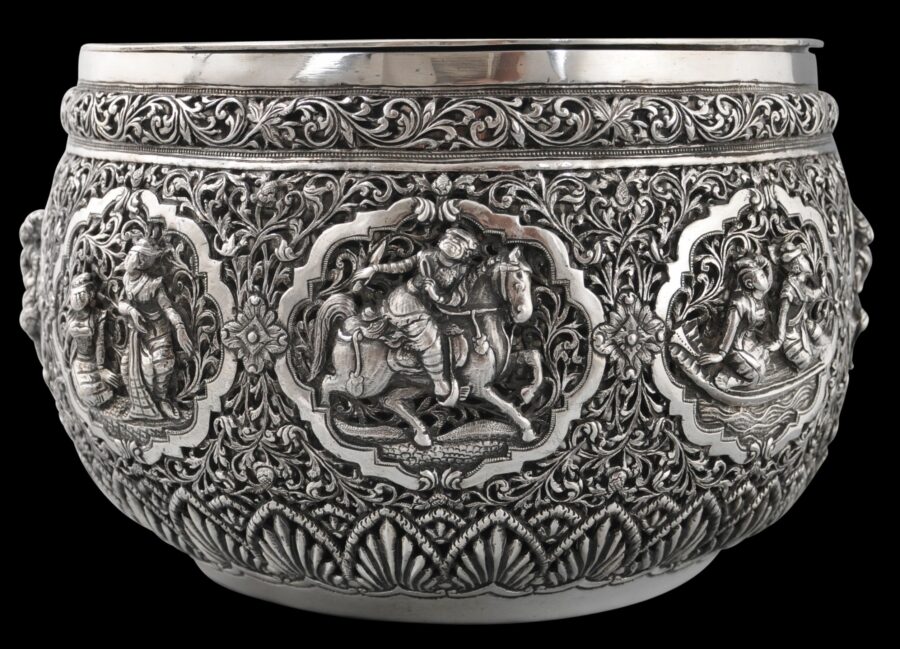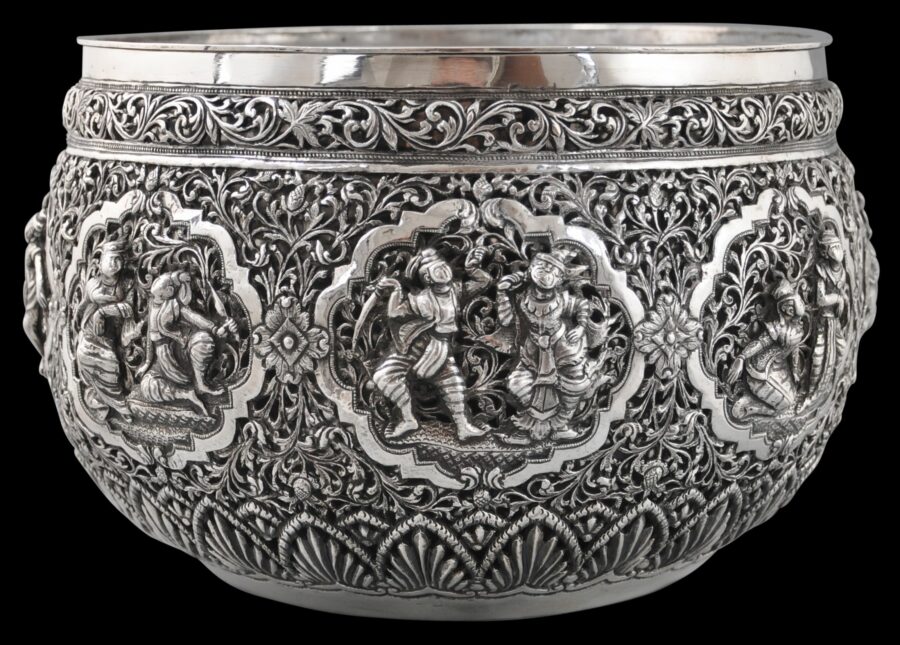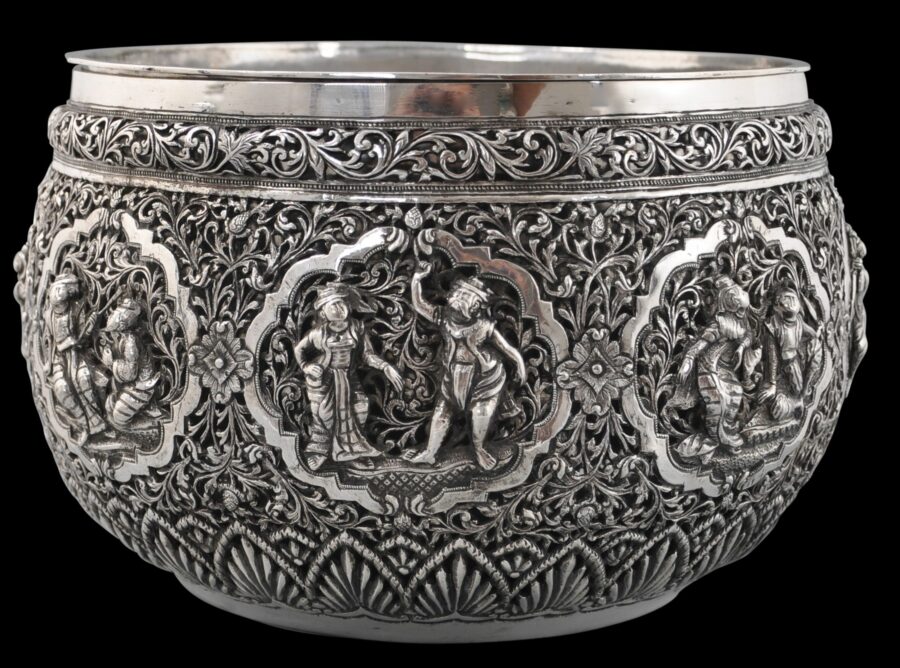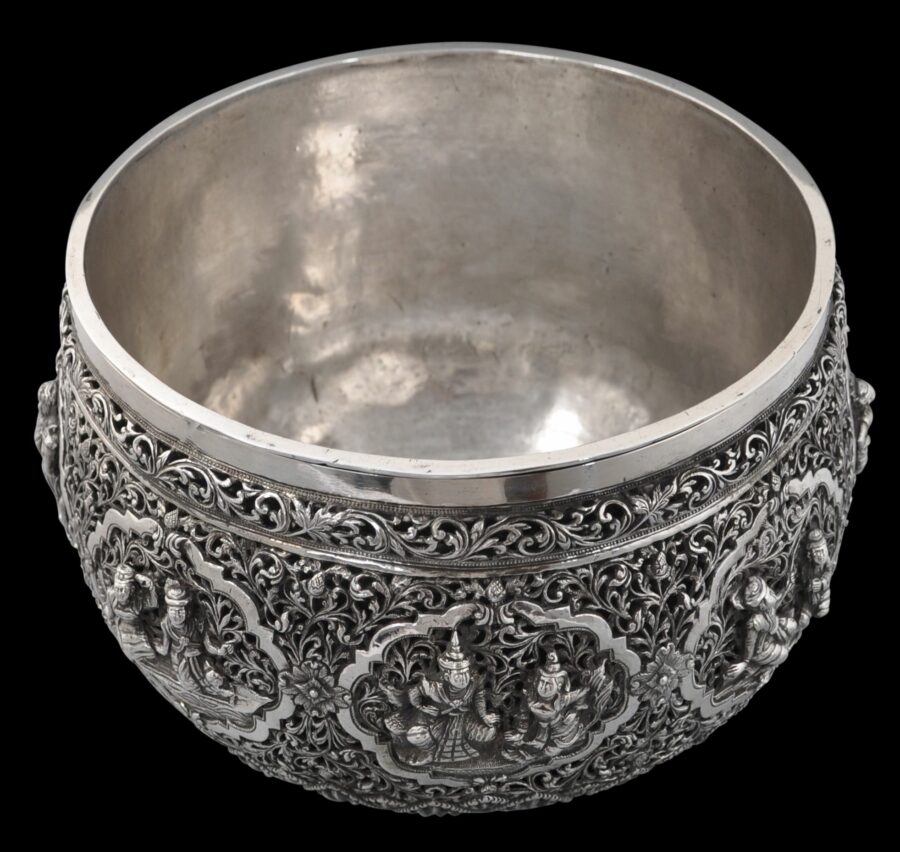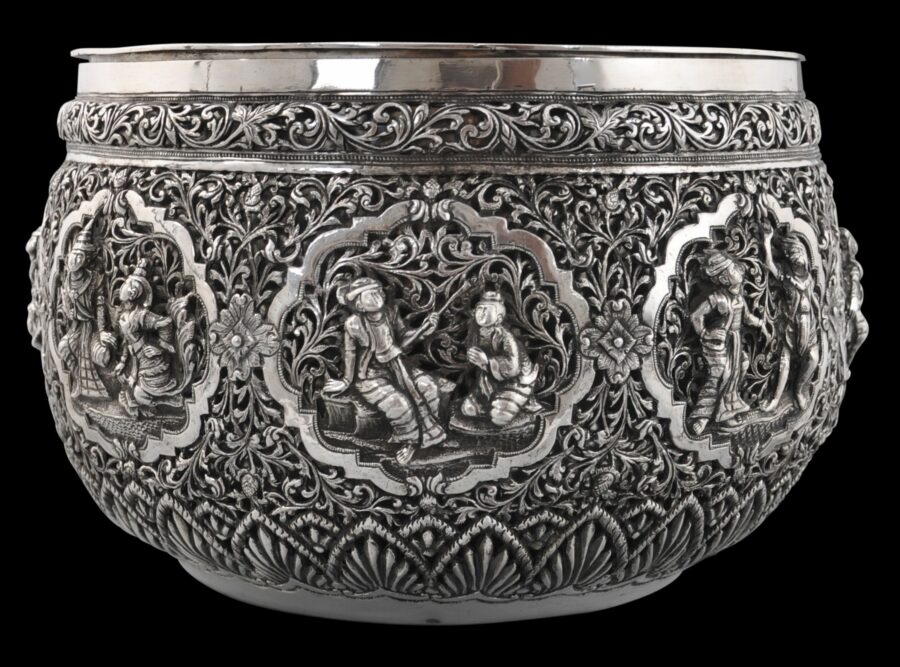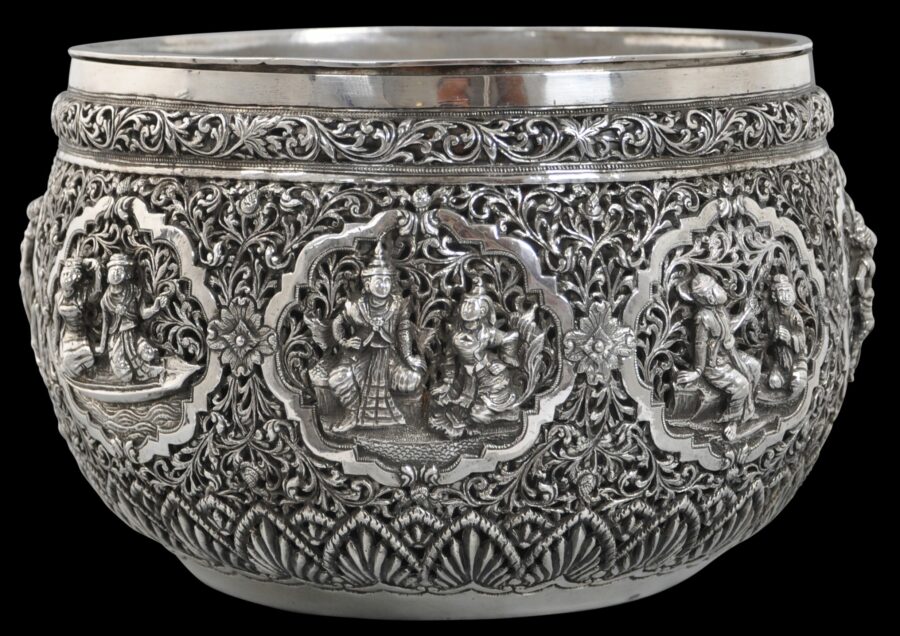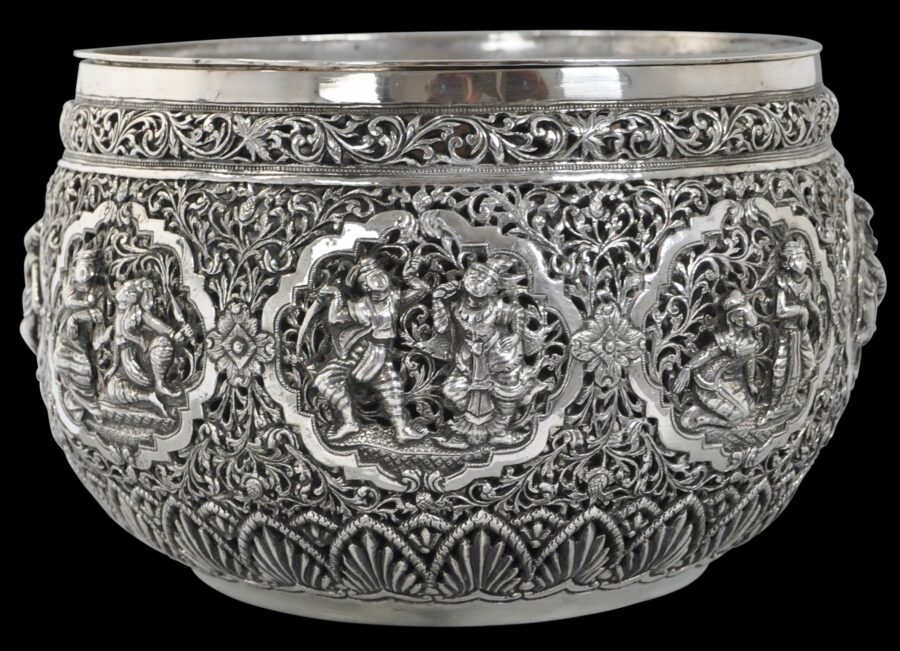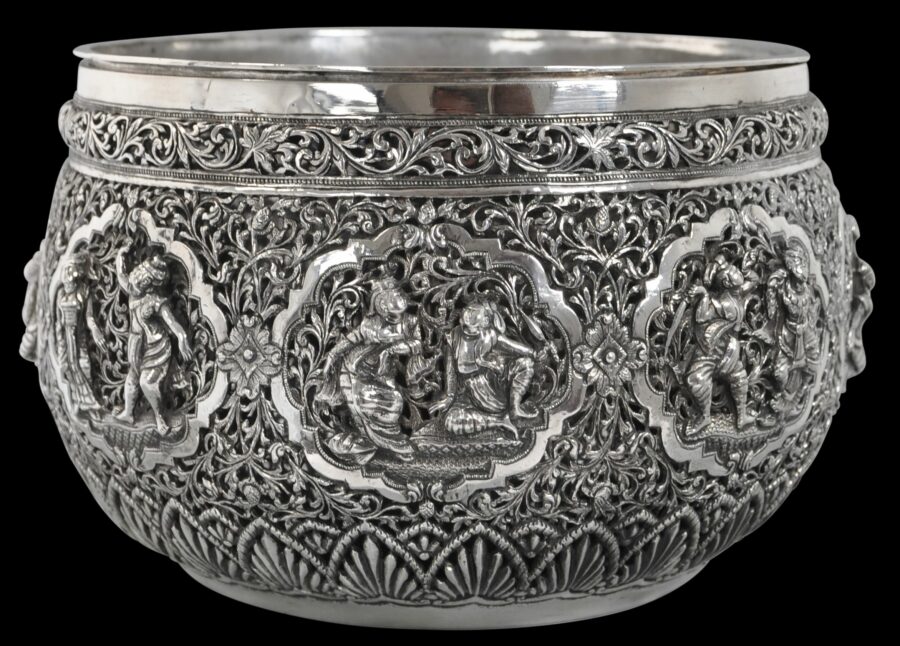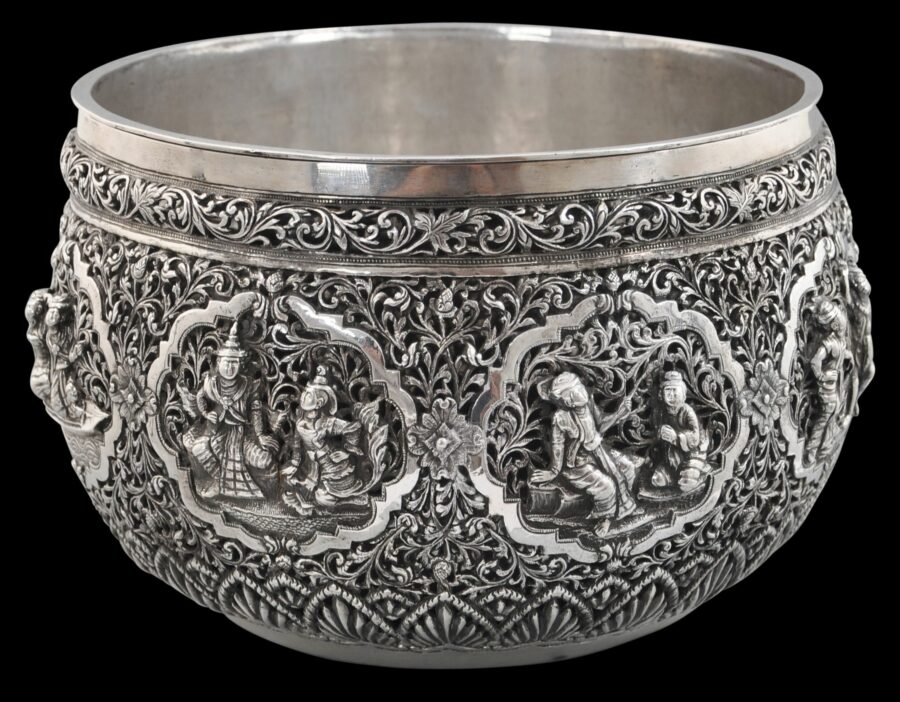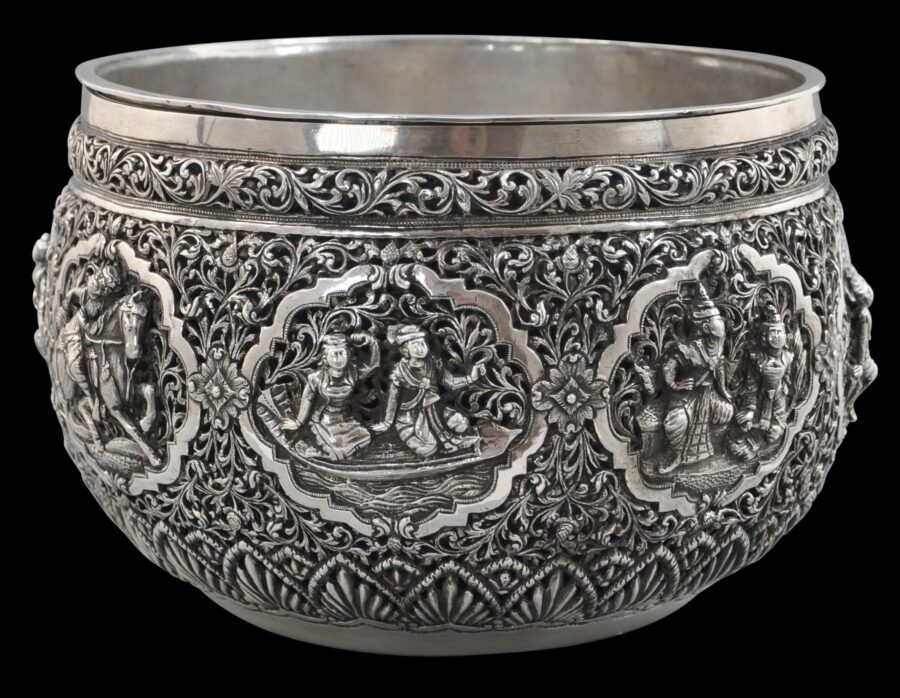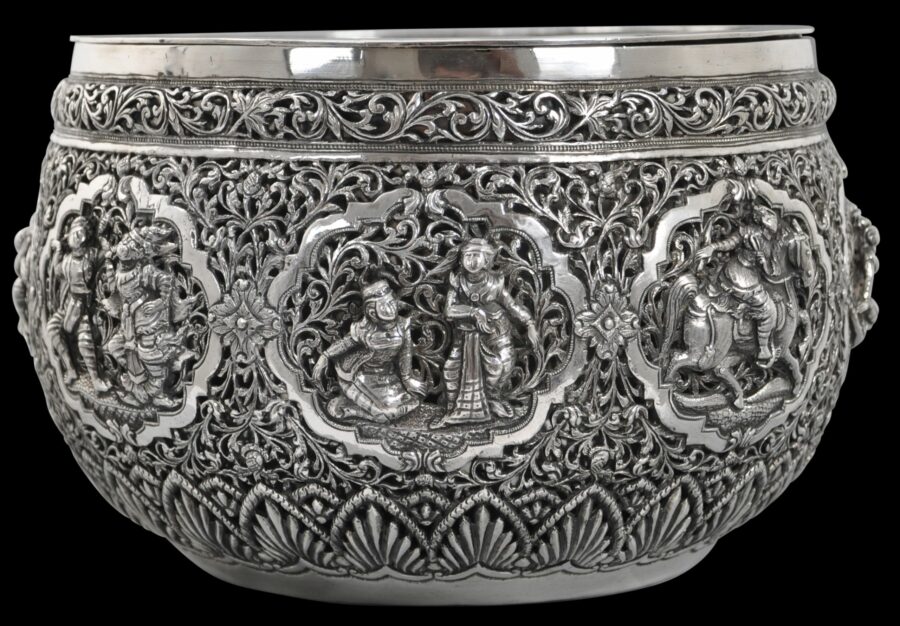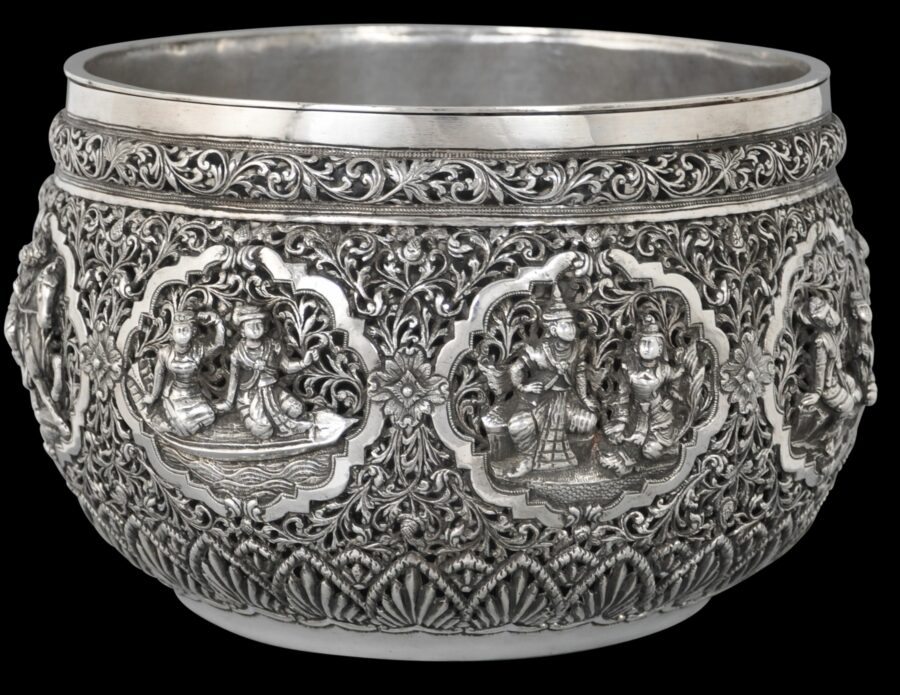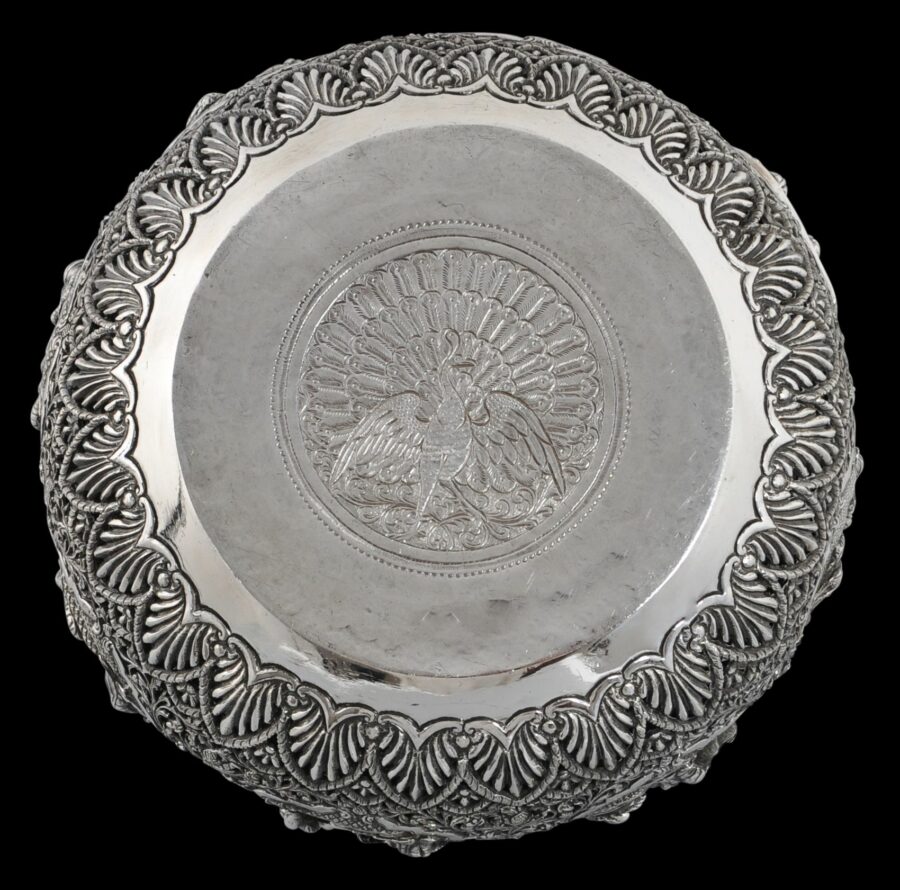This large-sized and exceptional bowl is a fine example of the heights reached by Burmese silverwork. Unusually, the bowl as a silver liner of high-grade beaten silver, which functions as another bowl. It fits snugly into the outer bowl and adds a lot to the overall weight. This is the only example of such a double-lined pierced bowl that we have seen. (Most likely, others lack liners if they ever had any because the liners were scrapped for their silver value.)
The outer bowl has eight roundels with scalloped borders with Burmese courtly and other scenes amid a background of finely executed open-work. It is likely that the scenes are stylised accounts of the Vidhurapandita Jataka, an account of one of the Buddha’s previous lives where he perfects the virtues necessary for Buddhahood. One roundel, for example, shows a demon-headed figure, probably Punnaka, seated on a horse.
The roundels are separated by further pierced, complex, interlocking filiate scrollwork.
The upper border, in high relief, is pierced and decorated in more scrollwork.
The lower border has a wide frieze in high relief of pointy acanthus-like leaves.
The base is engraved with a decorative roundel filled with a peacock motif.
Work of this type sometimes is associated with a small number of silversmiths who worked at Moulmein (now called Mawlamyine and located around 300km south east of Rangoon) in Burma.
A pierced silver bowl similar to this, including having a similar carved wooden stand, is illustrated in Tilly (1902), an image which is reproduced in Fraser-Lu (1994, p, 179). It is possible that this bowl and the Tilly bowl are by the same maker who Tilly (1902, p. 18) identifies as Maung Shwe Yon of Rangoon, who died in 1889.
The shape of such bowls is based on the monk’s begging bowl known as a thabeik, although ironically, Burmese monks are prohibited from touching gold or silver. Accordingly, Burmese silversmiths did not use their skills on religious objects unlike silversmiths in other Buddhist lands such as Tibet or Sri Lanka.
The example here is in fine condition and is without dents, splits or repairs.
References
Fraser-Lu, S., Silverware of South-East Asia, Oxford University Press, 1989.
Fraser-Lu, S., Burmese Crafts: Past and Present, Oxford University Press, 1994.
Green, A., Burmese Silver from the Colonial Period, Ad Illisvm, 2022.
Tilly, H.L., The Silverwork of Burma (with Photographs by P. Klier), The Superintendent, Government Printing, 1902.
Tilly, H.L., Modern Burmese Silverwork (with Photographs by P. Klier), The Superintendent, Government Printing, 1904.


